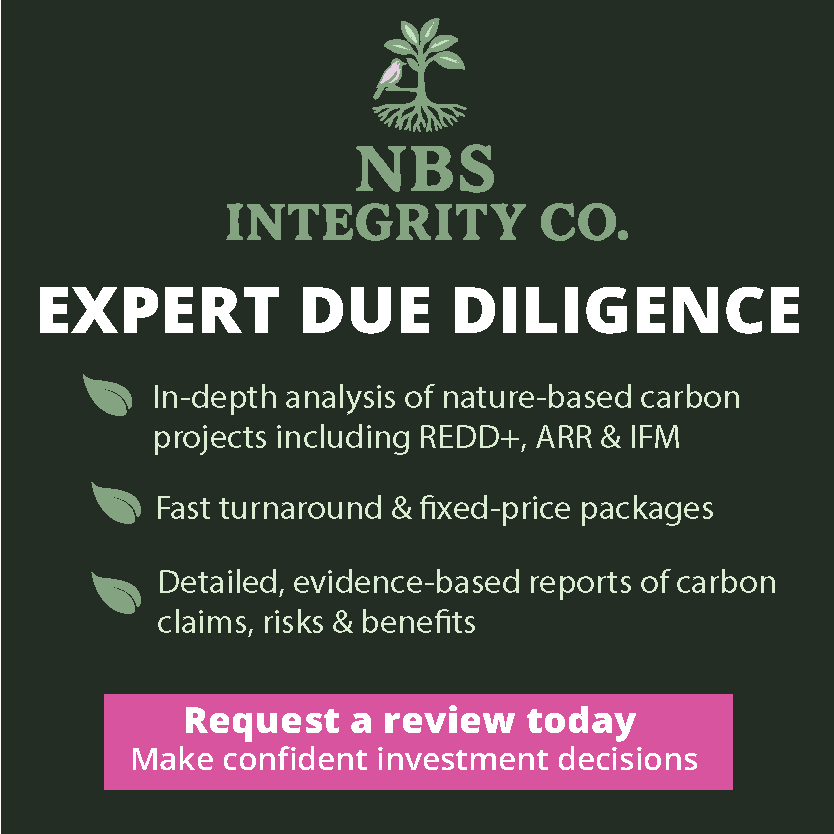By Sarah Leugers, Chief Strategy Officer, Gold Standard
With the hype around web 3.0, it’s important to be mindful about which decentralised approaches to deploy in carbon markets, and – importantly – how to deploy them. Technology is agnostic toward its ultimate effect. Software can help you shop from your sofa or it can deliver malware that takes down an energy grid.
So it is with tokenisation of carbon credits.
Done right, tokenisation can increase access to carbon markets, create a better record of transactions, and when used with smart contracts, digital MRV systems and good governance it can create trust in areas lacking proper governance and help narrow the gap between those creating the impact and those who wish to support, sponsor or fund it.
Done poorly, it can be a wasted use of a distributed ledger technology (and the associated energy requirements), or worse, a scam.
Representing real carbon credits
The first premise is perhaps an obvious one: to deliver the impact that’s promised. Technically, tokenisation can represent anything the issuer wishes. This is why it’s important that when a token is marketed as a carbon credit or as delivering the impact a carbon credit represents – one tonne of CO2 permanently prevented from entering the atmosphere – it is professionally and independently verified.
This means that any token billed as reducing, compensating for, or offsetting your footprint has all the fundamental attributes for carbon credits: real, additional, permanent, robustly quantified, independently verified, and uniquely claimed.
Of concern, there are a number of emerging initiatives that implicitly or explicitly market themselves as carbon credits, yet are not. Some promise to compensate for, or even “erase” your carbon footprint when you purchase their tokens, yet fail to meet common standards for additionality, monitoring, or permanence.
While these efforts may indeed deliver some positive impact for some period of time, to claim to have offset or compensate (i.e. to leave the atmosphere better off than if the token had not been purchased and retired) a tonne of carbon simply does not hold up.
Full transparency of attributes of the underlying credit
Beyond the fundamental characteristics required of a carbon credit, tokenisation should leverage the power of its technology to catalyse a race to the top rather than simply using new infrastructure to facilitate business as usual.
Klima DAO made a splash with their launch in late 2021, backed by celebrity investor Mark Cuban. Klima DAO considers any Verra credit a “Base Carbon Tonne”, which comprises a pool from which $KLIMA coins can be minted.
Yet when some very cynical actors bridged 670,000 VCUs from a HFC23 decomposition project in Yingpeng, China, a project type that had been effectively discredited in the early 2010s, the liquidity tradeoff became very clear. While this was unlikely to be the only factor affecting price, $KLIMA saw a precipitous drop in value from which the coin has not recovered.
Proponents of blockchain celebrate its capacity for transparency. But if this power is wielded only on tracing transactions, not the details of what’s being transacted or by whom, we’ve missed a trick – especially in such a heterogeneous market.
Fully capturing the detailed attributes of carbon credits can counter the negative impacts of commodification and incentivise carbon projects with deep sustainable development impact. For example, community services projects like off-grid renewables, clean cooking solutions, or clean water access often deliver benefits far beyond the carbon reduction – for better health, improved livelihoods, and even reduced deforestation and biodiversity conservation.
Clarity of verified impact can allow credits to be valued accordingly and catalyse even greater positive benefits – enabling carbon markets to deliver on climate justice.
Compliance and engagement with issuing standard
Carbon markets are becoming increasingly diversified, making the tracking of credits and claims made by relevant parties increasingly critical. The public registry of the standard that issued a credit is the source of truth for the status of that credit. This means that any secondary market, blockchain-based or otherwise, must be in compliance with the issuing standard’s Terms and Conditions to ensure legal ownership of the credit and rights to claim the underlying impact, and must communicate any change in status of the credit back to the registry.
Simply issuing a token does not confer legal rights to the underlying credit or impact the token is said to represent. In fact, most standards have legal terms that explicitly prohibit this. In extreme cases, a registry may have to cancel credits because of a grievance or non-conformity. Without two-way communication with the issuing standard, tokens representing those credits risk becoming meaningless.
Proper integration with the issuing standard and its legal terms allows for harmonisation with national and global registries needed report accurately on progress to the Paris Agreement, avoiding double counting and double claiming. This is the ground truth for knowing how we’re doing in combatting the climate emergency, and protects the rights and claims of users up and down the value chain.
Tokens for good
Gold Standard has written extensively about the potential for innovative technology to positively disrupt carbon markets and climate action generally. We welcome the transformative potential of tokenisation of positive impact designed with these principles in mind.
We remain open to partnerships in this fast-moving space and will explore this and further next-generation digitisation approaches within the Gold Standard IQ programme recently funded by Google.org and through our Open Collaboration for Digital MRV announced at COP26.
Stay tuned for more details about how we plan to authorise tokenisation of Gold Standard credits.




